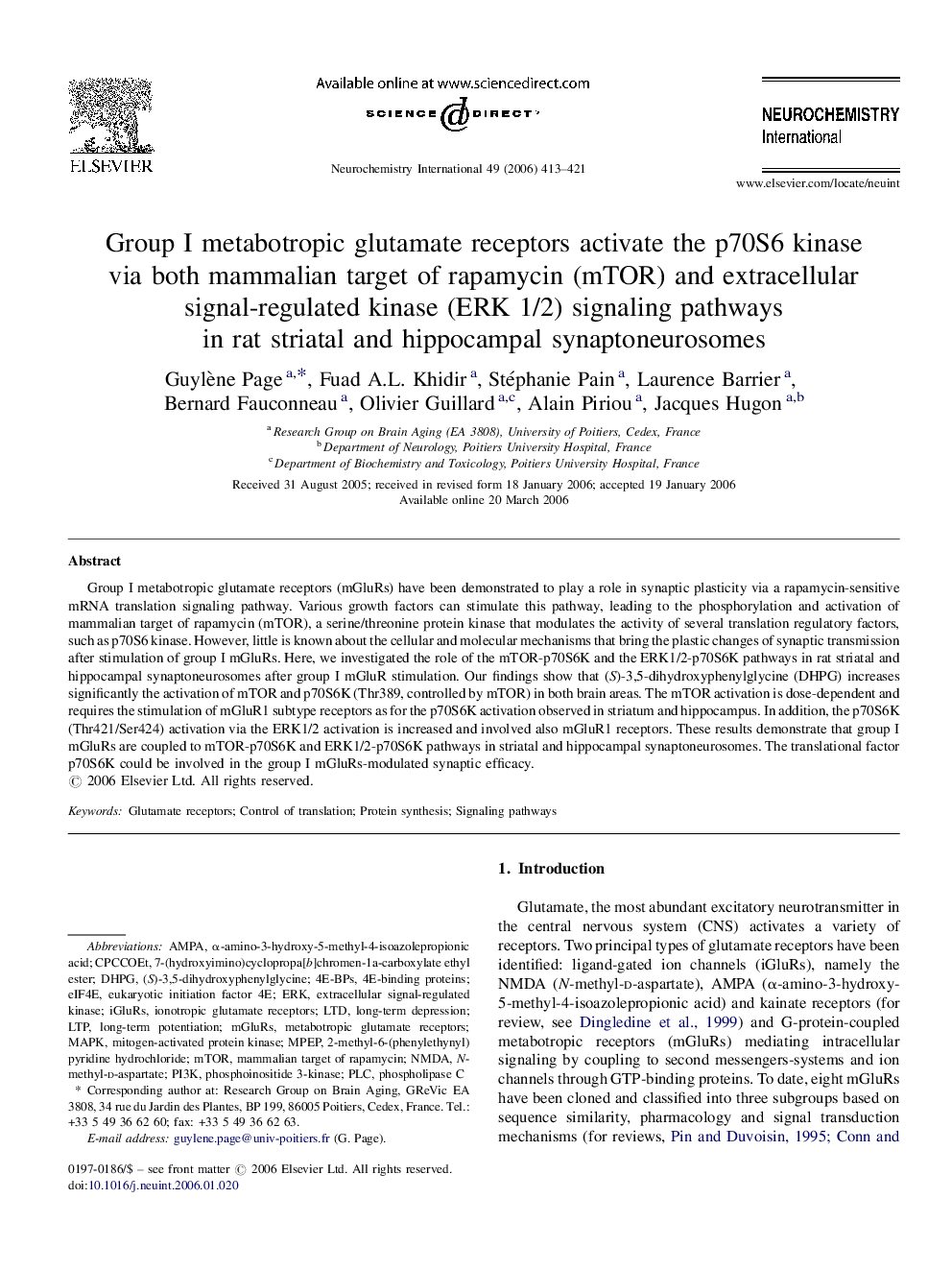| Article ID | Journal | Published Year | Pages | File Type |
|---|---|---|---|---|
| 2202139 | Neurochemistry International | 2006 | 9 Pages |
Group I metabotropic glutamate receptors (mGluRs) have been demonstrated to play a role in synaptic plasticity via a rapamycin-sensitive mRNA translation signaling pathway. Various growth factors can stimulate this pathway, leading to the phosphorylation and activation of mammalian target of rapamycin (mTOR), a serine/threonine protein kinase that modulates the activity of several translation regulatory factors, such as p70S6 kinase. However, little is known about the cellular and molecular mechanisms that bring the plastic changes of synaptic transmission after stimulation of group I mGluRs. Here, we investigated the role of the mTOR-p70S6K and the ERK1/2-p70S6K pathways in rat striatal and hippocampal synaptoneurosomes after group I mGluR stimulation. Our findings show that (S)-3,5-dihydroxyphenylglycine (DHPG) increases significantly the activation of mTOR and p70S6K (Thr389, controlled by mTOR) in both brain areas. The mTOR activation is dose-dependent and requires the stimulation of mGluR1 subtype receptors as for the p70S6K activation observed in striatum and hippocampus. In addition, the p70S6K (Thr421/Ser424) activation via the ERK1/2 activation is increased and involved also mGluR1 receptors. These results demonstrate that group I mGluRs are coupled to mTOR-p70S6K and ERK1/2-p70S6K pathways in striatal and hippocampal synaptoneurosomes. The translational factor p70S6K could be involved in the group I mGluRs-modulated synaptic efficacy.
